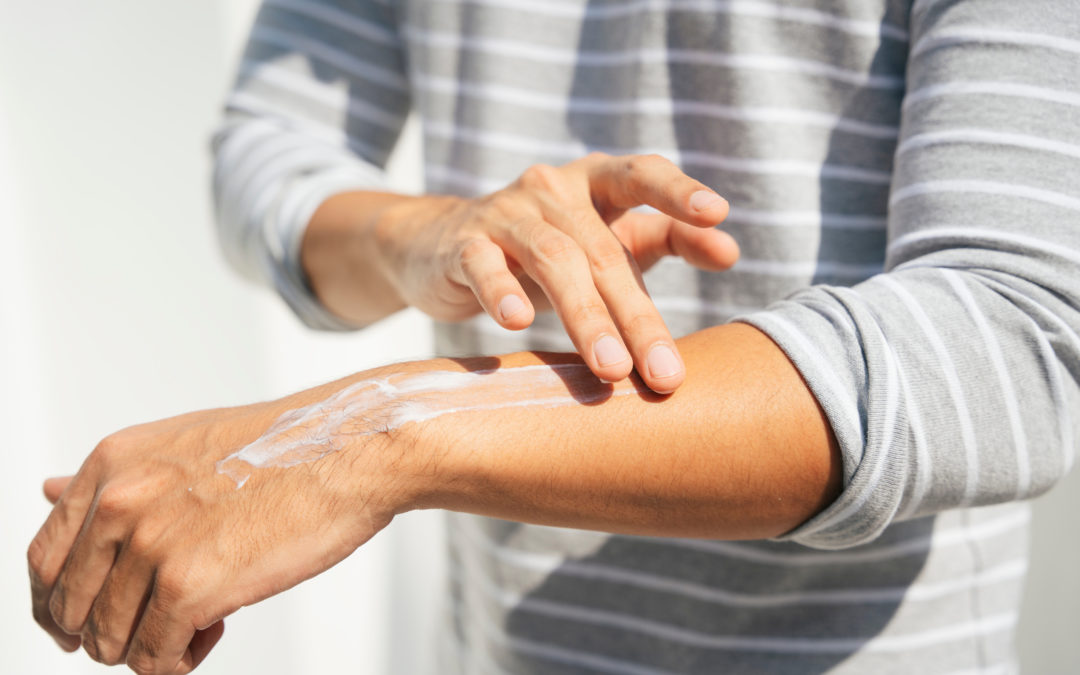Approximately 97,610 new melanoma cases will be diagnosed in the United States this year. In fact, according to the American Cancer Society, there are more people in the U.S. diagnosed with skin cancer every year than all other cancers combined. Fortunately, most skin cancers are treatable if diagnosed early.
As we approach the summer months, let’s take a look at ways you can reduce your risk.
Not all skin cancers are the same
It’s important to understand there are several types of skin cancer and each comes with its own risk factors, symptoms, and treatments.
Squamous cell carcinoma and basal cell carcinoma are the most common types of skin cancer. These cancers develop in the squamous and basal cells of the skin and are known as non-melanoma skin cancer.
Common risk factors for squamous and basal cell carcinomas include:
- Exposure to natural or artificial sunlight, including tanning beds, over a long period of time
- Fair complexion
- Actinic keratosis (rough, scaly patches of skin that develop after exposure to sunlight)
- Past treatment with radiation
- Medicines or medical conditions that suppress the immune system
- Exposure to arsenic
Once diagnosed, non-melanoma skin cancer can often be successfully treated with a variety of surgical and non-surgical treatment options.
Melanoma is the most aggressive form of skin cancer and can be deadly if not detected and treated early. Melanoma can develop anywhere on the body including eyes, scalp, nails, feet, mouth, and other places that are not exposed to the sun.
Risk factors for melanoma include:
- Exposure to natural or artificial sunlight, including tanning bed, over a long period of time
- Fair complexion
- History of blistering sunburns as a child or teenager
- Having several large or many small moles
- Having a family history of unusual moles or melanoma
Treatment options for melanoma often depend on what stage the cancer is diagnosed. Common treatment options often include surgery, chemotherapy, radiation therapy, and immunotherapy.
Know your risks and what to look for
While having fair skin does increase a person’s risk of developing skin cancer, people of all skin types, races, and ethnicities are at risk if they don’t take the proper precautions while spending time in the sun.
To detect skin cancer in its early stages, pay close attention to changes, including:
- A new mole or growth on the skin
- Sores that do not heal
- A change in scars or an old growth – including changes in color
- Dark bands across the nail bed
If you detect any of these changes, it is important to see your primary care provider or dermatologist as soon as possible.
Protect yourself every day
Sun damage has lasting effects and not all damage can be reversed. However, there are ways to protect yourself each day to reduce your future risk for skin cancers.
- Minimize sun exposure from 10 AM to 4 PM, when the sun’s rays are the strongest. If you enjoy outside activities, try to schedule them outside of “peak sun hours.”
- Apply sunscreen with an SPF of 30 or greater at least one-half hour before going outdoors and reapply as directed on the product label. Look for products containing avobenzone, titanium dioxide, or zinc oxide. Chose a “very water-resistant” formula if you will be sweating or in water; however, remember that even these must be reapplied every 80 minutes.
- Protect your lips with lipstick or lip balm that contains sunscreen.
- Wear protective clothing, like a long-sleeve shirt, a wide-brimmed hat, and sunglasses.
- Avoid the use of UV beds at tanning salons.
- Make sure to use sunscreen on overcast days. The ultraviolet rays can be as damaging to your skin on cloudy, hazy days as they are on sunny days.
- Use sunscreen at lower latitudes or high altitudes. The sun is stronger near the equator and at high elevations, where the sun’s rays strike the earth most directly.
- If you need a little “color,” use a sunless tanning lotion or get a spray tan.
Get regular skin checks
Because early detection of skin cancer is important for successful treatment, be sure to conduct a monthly skin self-exam and tell your doctor about any changes or new spots on your skin. You should also tell your doctor about any growths that look different than the rest of your moles. During your monthly skin self-exam, be mindful of the “A-B-C-D-E Rule” for early detection of melanoma.
If you find any changes or new spots on your skin, don’t hesitate to make an appointment to get it checked out. Don’t have a provider? Find one here.







